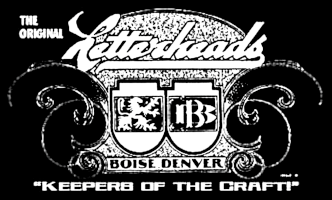What tarnishes mirrors?....
http://www.sciencedirect.com/science?_o ... ff4244d858
And
http://www.sciencedirect.com/science?_o ... 90fcfc6ef2
Again it seems that we need lead in our paint.
But in this case real lead and not leadoxide.
Welcome to The Hand Lettering Forum!
This is an interactive Bulletin Board on the topics of Sign making, design, fabrication, History, old Books and of coarse Letterheads, Keepers of the craft. The Hand Lettering Forum features links to resources, sign art history, techniques, and artists profiles. Learn more about Letterheads at https://theletterheads.com. Below you'll see Mchat has been added as a live communication portal for trial, and the Main forum Links are listed below.
This is an interactive Bulletin Board on the topics of Sign making, design, fabrication, History, old Books and of coarse Letterheads, Keepers of the craft. The Hand Lettering Forum features links to resources, sign art history, techniques, and artists profiles. Learn more about Letterheads at https://theletterheads.com. Below you'll see Mchat has been added as a live communication portal for trial, and the Main forum Links are listed below.
Surface studies of corrosion in second surface silver helios
Moderators: Ron Percell, Mike Jackson, Danny Baronian
-
erik winkler
- Posts: 1097
- Joined: Sat Feb 23, 2008 5:48 pm
- Location: Amsterdam Netherlands
- Contact:
Surface studies of corrosion in second surface silver helios
Realizing we are in the 2nd renaissance of the arts.
Learn, copy and trying to improve...
Still in the learning phase
Amsterdam Netherlands
www.ferrywinkler.nl
www.schitterend.eu
www.facebook.com/Schitterend.eu
Learn, copy and trying to improve...
Still in the learning phase
Amsterdam Netherlands
www.ferrywinkler.nl
www.schitterend.eu
www.facebook.com/Schitterend.eu
-
Patrick Mackle
- Posts: 478
- Joined: Thu Apr 08, 2004 10:21 am
- Location: Monrovia, Ca.
- Contact:
Re: Surface studies of corrosion in second surface silver helios
The first account seems to apply to sputtered or vacuum deposition mirrors. They are deposited with a thin layer of metal only and no paint is involved.
This is because they are usually encased or in a fairly neutral environment. If in time the reflective metal layer becomes blemished, the thin metal layer is easily removed and
a fresh new layer is applied. This way the mirror is always kept in a fresh condition.
The second account is a test of painted mirror in about the worst situation a silver coated glass could be subjected to.
Basically the salt is breaking down or leaching out soluble solids in the paint coating, which allows the corrosive salt to penetrate the resulting voids and reach the mirror metal, tarnishing and dissolving it.
Last year I was sent some 24" search light reflectors off of an old British ship that needed resilvering. Besides being painted with a very dense mirror paint, they had lead foil backing
that had been spun on to conform the their dished shape and the lead foil edge was formed around the edge of the dished mirror to hold it in place. Then the whole back was rolled
and formed with chicken wire.
The salty sea water eventually figured a way to defeat even this carefully planned barrier after more than 50 years of service.
Pat
This is because they are usually encased or in a fairly neutral environment. If in time the reflective metal layer becomes blemished, the thin metal layer is easily removed and
a fresh new layer is applied. This way the mirror is always kept in a fresh condition.
The second account is a test of painted mirror in about the worst situation a silver coated glass could be subjected to.
Basically the salt is breaking down or leaching out soluble solids in the paint coating, which allows the corrosive salt to penetrate the resulting voids and reach the mirror metal, tarnishing and dissolving it.
Last year I was sent some 24" search light reflectors off of an old British ship that needed resilvering. Besides being painted with a very dense mirror paint, they had lead foil backing
that had been spun on to conform the their dished shape and the lead foil edge was formed around the edge of the dished mirror to hold it in place. Then the whole back was rolled
and formed with chicken wire.
The salty sea water eventually figured a way to defeat even this carefully planned barrier after more than 50 years of service.
Pat
 Denver Chapter of the Letterheads
Denver Chapter of the Letterheads